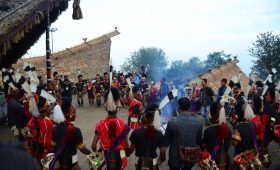Nestled in the northeastern region of India, Nagaland boasts a rich and vibrant cultural tapestry that is as diverse as it is captivating. The culture of Nagaland, often referred to as the “Land of Festivals,” is a testament to the state’s profound heritage and its indigenous tribes, each contributing to the unique mosaic that defines this part of the world.
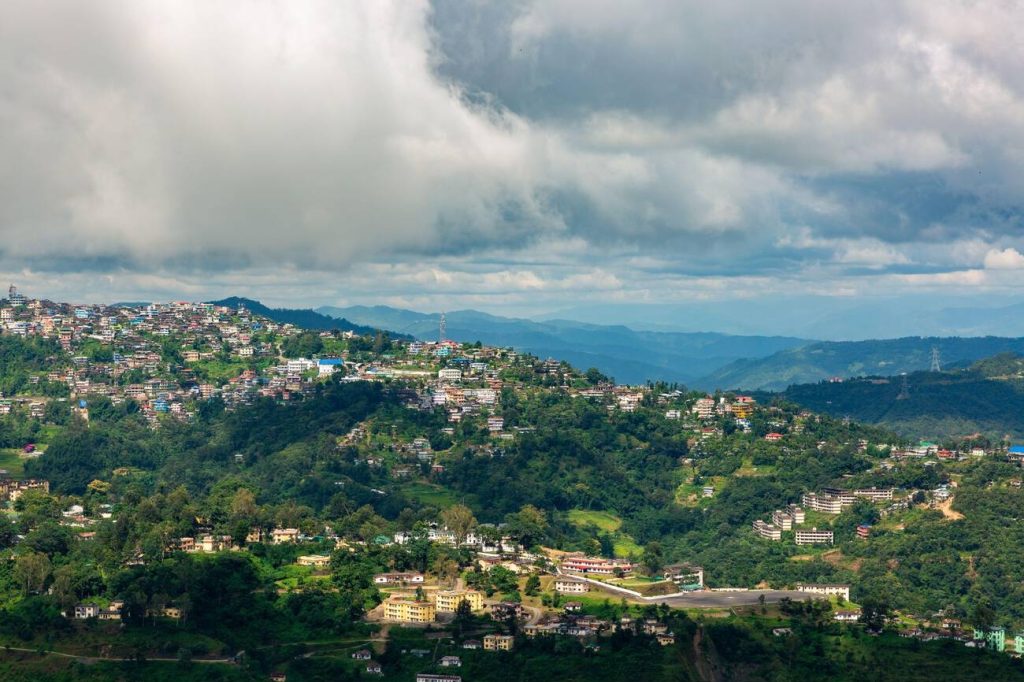
The Indian subcontinent is blessed with a precious treasure, known as the “Seven Sisters,” where picturesque valleys, rolling hills, cascading waterfalls, and lush vegetation adorn the northeastern region. This part of India is renowned not only for its breathtaking natural beauty but also for its invaluable natural resources and the culture of Nagaland.
Within this enchanting landscape lies Nagaland, a hidden gem awaiting discovery. Often referred to as ‘The Land of Tribes,’ the culture of Nagaland has cultivated a captivating yet enigmatic reputation. Exploring a new culture is a thrilling endeavor, offering us immeasurable knowledge and stories, wouldn’t you agree? Even in the uncharted corners of Nagaland, where mysteries linger, let us embark on a journey to comprehend the culture and traditions that thrive in this intriguing land.
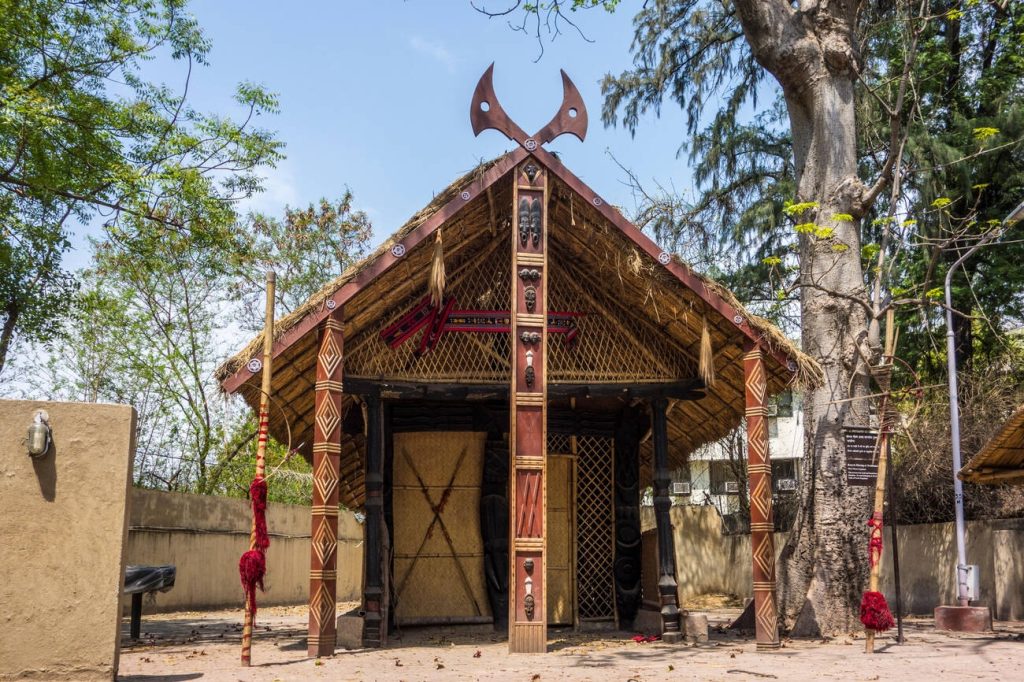
Nagaland, as you likely know, is a mountainous state nestled in the northeastern folds of India. The region’s remarkable diversity stems from its multitude of tribes, which inhabit a significant portion of the state. It is fascinating to note that each Nagaland tribe cherishes a unique set of beliefs and customs exclusive to them, and each tribe celebrates its own festivals, giving rise to the moniker ‘Land of Festivals.’ Consequently, the true essence of Nagaland lies predominantly in its people. With approximately 66 tribes and sub-tribes in Nagaland, the majority follow Christianity, while Hinduism, Jainism, and other religions coexist as minorities.
The tradition and art as well as the culture of Nagaland are deeply rooted in its history and culture. With a history dating back centuries, the state has witnessed a remarkable fusion of traditions and influences, both indigenous and from neighboring regions. The indigenous tribes, including the Angamis, Aos, Lothas, and many others, have played a pivotal role in shaping the cultural identity of Nagaland. The culture of Nagaland finds expression in its vibrant festivals and rituals. The Hornbill Festival, often described as the “Festival of Festivals,” showcases the state’s diverse heritage through music, dance, and traditional crafts and the various culture of Nagaland. These festivals are a testament to the Naga people’s unwavering commitment to preserving their rich cultural heritage.
Occupation in Nagaland is primarily agrarian, with agriculture serving as the backbone of the state’s economy. The people of Nagaland engage in terrace farming, cultivating crops like rice, millets, and vegetables. This occupation not only sustains their livelihoods but also influences their culture, as farming practices are deeply intertwined with their traditions and way of life.
The culture of Nagaland is a captivating blend of tradition, history, and art. Its festivals, rooted in ancient customs, serve as a vibrant reflection of the state’s rich cultural tapestry. While the occupation in Nagaland revolves around agriculture, it is the cultural diversity and traditions of its indigenous tribes that truly set this region apart, making it a cultural treasure trove waiting to be explored.
History of Culture of Nagaland-
The history of Nagaland is a journey through time that unveils the rich tapestry of this northeastern Indian state. It is a land steeped in tradition, with a remarkable past that has shaped its unique identity. This historical narrative traces the key milestones in Nagaland’s history.
Ancient and Early Medieval Periods (1st Century AD – 13th Century AD):
The earliest records of human habitation in Nagaland date back to the 1st century AD. The region was inhabited by various Naga tribes, each with its own distinct culture and traditions. These tribes lived in relative isolation, and their history was largely oral, passed down through generations. The Naga people practiced a mix of animism and shamanism and were known for their headhunting traditions.
Medieval Period (14th Century AD – 19th Century AD):
During the medieval period, Nagaland came under the influence of neighboring kingdoms, including the Ahom Kingdom and the Manipur Kingdom. These interactions led to the spread of Hinduism and the assimilation of some Hindu practices into the Naga culture. However, the Naga tribes remained largely autonomous.
British Colonial Era (19th Century AD):
The arrival of the British in the 19th century marked a significant turning point in Nagaland’s history. The British established control over the region, leading to clashes with the Naga tribes. The Naga Hills, as the area was known then, saw several revolts against British rule, most notably the Angami Zapu Phizo-led Naga National Council (NNC) insurgency, which began in the 1950s.
Post-Independence Period (1947 – 1963):
After India gained independence in 1947, the Naga Hills were integrated into the Indian Union. However, the demand for Naga self-determination persisted, leading to negotiations between the Indian government and Naga leaders. These negotiations culminated in the creation of Nagaland as a separate state on December 1, 1963. This event marked the birth of the modern state of Nagaland, with Kohima as its capital.
Conflict and Peace Process (1960s – 1990s):
Despite the formation of Nagaland as a state, armed conflict continued in the region. The NNC and later, the National Socialist Council of Nagaland (NSCN), waged insurgencies seeking greater autonomy and, in some cases, complete independence. The region saw years of violence and unrest.
However, in the late 20th century and early 21st century, efforts towards peace and reconciliation gained momentum. Ceasefire agreements were signed between the Indian government and various Naga insurgent groups. These agreements paved the way for peace talks and negotiations that aimed at resolving the longstanding issues.
Contemporary Nagaland (21st Century):
Today, Nagaland is a state known for its vibrant culture, traditions, and festivals. The Naga people have made significant strides in various fields, including education, arts, and sports. The state’s natural beauty continues to attract tourists, contributing to its economy.
The history of Nagaland is a testament to the resilience and determination of its people. From ancient times to the present, Nagaland has undergone significant transformations, overcoming challenges and striving for peace and development. The state’s history serves as a reminder of the rich cultural heritage and the enduring spirit of its inhabitants.
Festive culture and traditions of Nagaland-
The festival culture and traditions of Nagaland are a vibrant and integral part of the state’s identity. Nestled in the northeastern region of India, Nagaland is often referred to as the “Land of Festivals.” These festivals are not only colorful and joyous celebrations but also offer a glimpse into the rich cultural heritage and traditions of the Naga people.
Hornbill Festival:

One of the most famous and widely celebrated festivals in Nagaland is the Hornbill Festival. Held annually from December 1st to 10th in Kohima, the state capital, this festival is a grand showcase of Nagaland’s cultural diversity. It is aptly named after the hornbill, a revered bird in Naga folklore. During the festival, each Naga tribe exhibits its distinct traditions through music, dance, handicrafts, and traditional attire. Visitors can witness Naga tribes like the Angamis, Aos, Zeliangs, and more, performing their traditional dances and songs. The Hornbill Festival also features sports, food fairs, and other cultural activities, making it a truly immersive experience.
Moatsu Festival:
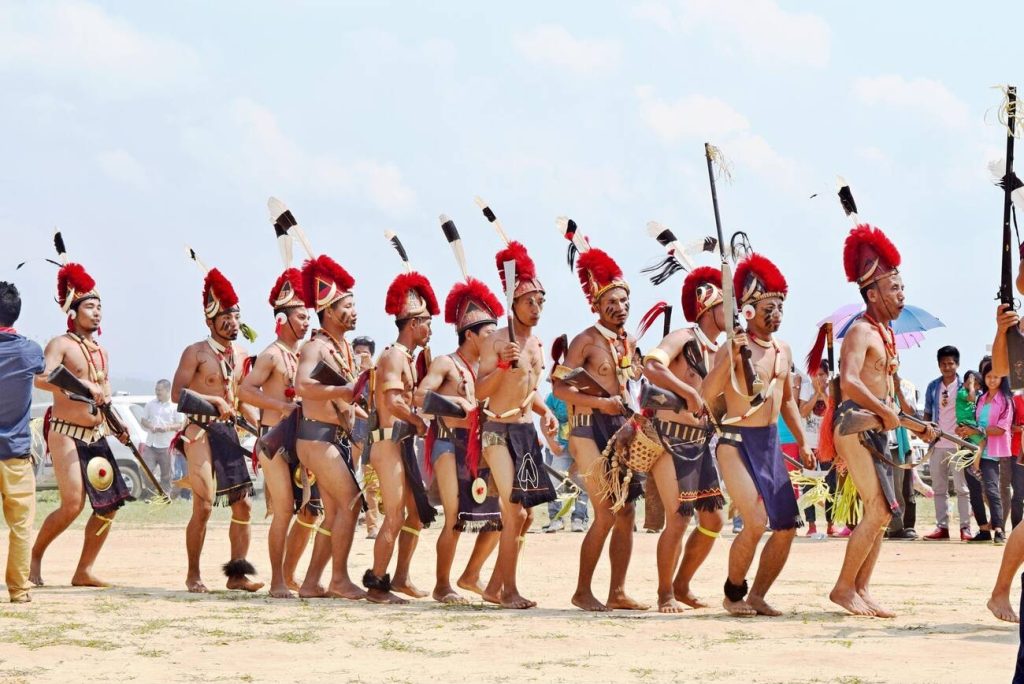
The Moatsu Festival is celebrated by the Ao Naga tribe in the first week of May. It marks the sowing season and is a time of thanksgiving to the gods for a bountiful harvest. During this festival, the Ao Nagas perform various traditional dances, including the famous ‘Moatsu Mong,’ where young men and women sing and dance together. The festival also includes feasting, where indigenous dishes are prepared and shared among the community.
Aoling Festival:
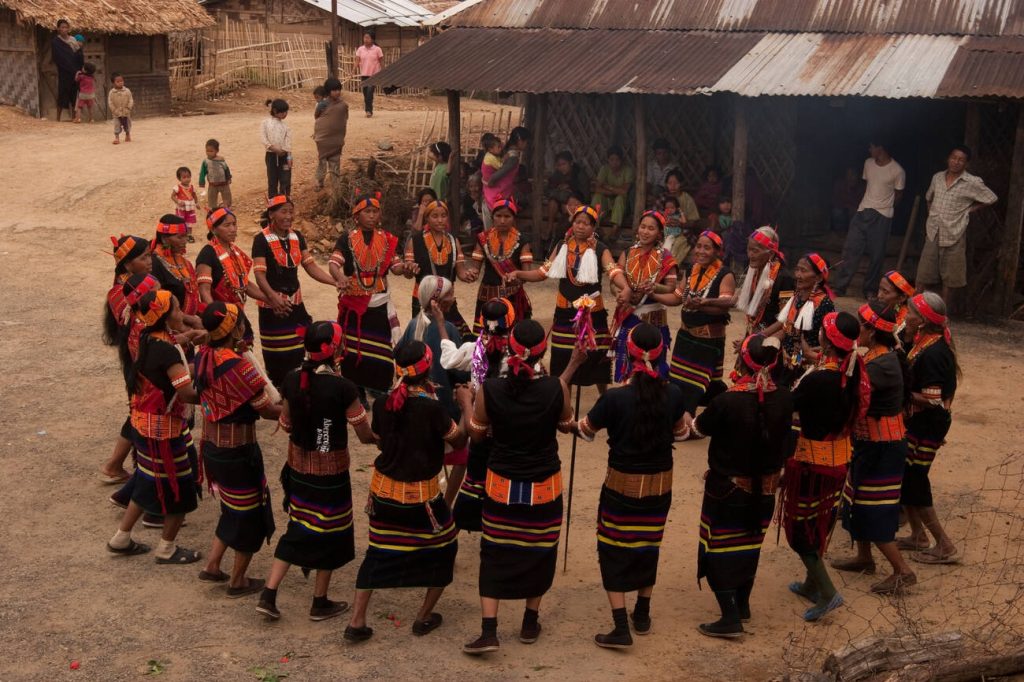
Celebrated by the Konyak tribe in the first week of April, the Aoling Festival is a significant event in Nagaland. It marks the beginning of the spring season and is celebrated with great enthusiasm. The Konyak people dress in their traditional attire, adorned with feathers, and perform traditional dances such as the ‘War Dance’ and the ‘Fire Dance.’ The festival is also an occasion for community bonding, feasting, and storytelling.
Sekrenyi Festival:
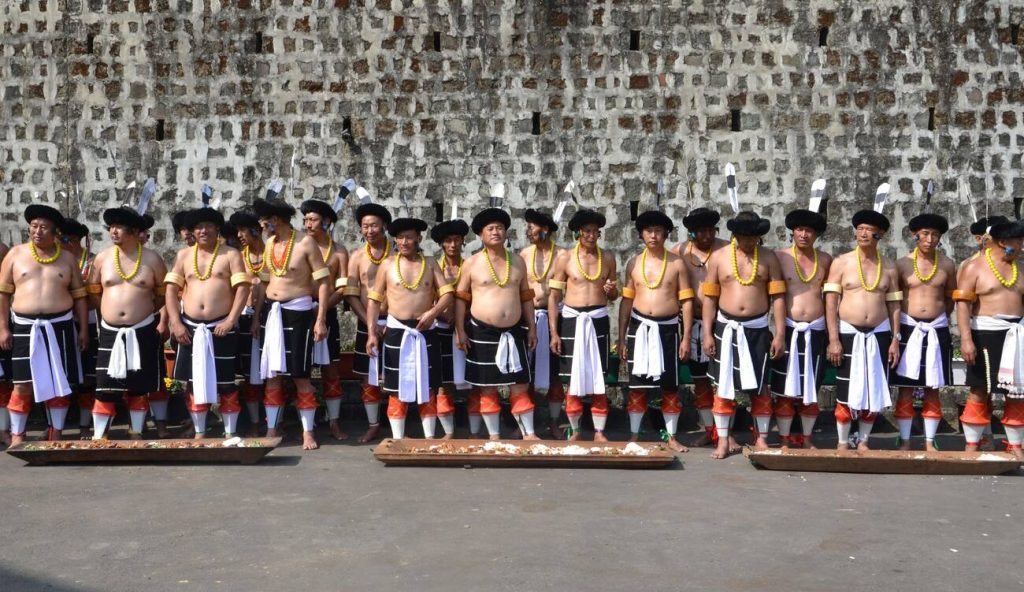
The Angami tribe observes the Sekrenyi Festival in February. It is a purification festival that involves various rituals and ceremonies to cleanse the village. The highlight of this festival is the traditional wrestling match, where young men display their strength and skills. Sekrenyi also includes the preparation of traditional food, rituals conducted by village priests, and the performance of traditional songs and dances.
Tuluni Festival:
Celebrated by the Sumi Naga tribe, the Tuluni Festival is observed in July. It is a post-harvest festival dedicated to feasting and merriment. Women play a prominent role during this festival, as they prepare sumptuous meals, including ‘Zutho’ (rice beer), and participate in dances and songs. The Tuluni Festival is an occasion for expressing gratitude to the gods for a successful harvest.
Yemshe Festival:
The Pochury tribe celebrates the Yemshe Festival in October. It is a harvest festival where the Pochury people offer prayers and sacrifices to the gods for a bountiful harvest. The festival is marked by traditional songs, dances, and rituals, including the ‘Shanthungo’ dance performed by young men and women.
These are just a few examples of the myriad festivals celebrated in Nagaland. Each festival carries its own unique significance, and they collectively reflect the deep-rooted cultural traditions, unity, and community spirit of the Naga people. Nagaland’s festival culture is not only a source of joy and celebration but also a window into the rich tapestry of its history and heritage.
Marrige culture and tradition in Nagaland-
The marriage culture and traditions in Nagaland are deeply rooted in the customs and practices of the various Naga tribes that inhabit the state. These traditions not only reflect the cultural diversity of Nagaland but also serve as a testament to the significance of marriage in the lives of the Naga people.
Pre-Marriage Customs:
Before the actual wedding ceremony, several rituals and customs are observed in Nagaland. These customs may vary from tribe to tribe, but they generally follow a similar pattern.
- Matchmaking: In Nagaland, marriages are often arranged by the families, with matchmaking being a crucial initial step. Elders or matchmakers from the community play a significant role in bringing together suitable matches. Compatibility in terms of tribe, social status, and family reputation is carefully considered.
- Dowry System: While the practice of dowry is declining in many parts of India, it still exists among some Naga tribes. The groom’s family may provide a list of items they expect as part of the dowry, which is negotiated between the families.
- Engagement Ceremony: Once a suitable match is found and agreed upon, an engagement ceremony is held. During this ceremony, the families exchange gifts, and the couple exchanges rings to formalize their engagement. It is a joyous occasion attended by close family members and friends.
The Wedding Ceremony:
The actual wedding ceremony in Nagaland is a grand and elaborate affair, marked by traditional customs and rituals that vary among tribes. Here are some common elements:
- Traditional Attire: The bride and groom wear traditional Naga attire. The bride is often adorned with intricate jewelry, including necklaces, bracelets, and earrings, while the groom may wear traditional Naga shawls and accessories.
- Sacred Rituals: The wedding ceremony is presided over by a village elder or priest who conducts various sacred rituals. These rituals involve the offering of prayers and sacrifices to invoke the blessings of the ancestors and the spirits for a happy and prosperous married life.
- Exchange of Vows: The couple exchanges vows and garlands as a symbol of their commitment to each other. This exchange signifies their union and love for one another.
- Community Participation: Weddings in Nagaland are community celebrations. The entire village often comes together to partake in the festivities, including singing, dancing, and feasting. Traditional Naga songs and dances are an integral part of the celebration, showcasing the cultural richness of the tribes.
- Feasting: Food plays a significant role in Naga weddings. A lavish feast is prepared for the guests, featuring a variety of traditional Naga dishes. It is a time for the community to come together and celebrate the union of the couple.
- Blessings: Elders and community members offer their blessings and well-wishes to the newlyweds, emphasizing the importance of family and community in Naga culture.
Post-Wedding Traditions:
After the wedding, the newly married couple returns to the groom’s village, where they are welcomed by the groom’s family and the community. They settle into their new life together, and the bride assumes her role in her new family.
The marriage culture and traditions in Nagaland are a testament to the cultural richness and diversity of the state. While some customs may evolve over time, the importance of family, community, and tradition remains at the core of Naga weddings. These ceremonies not only unite two individuals but also reinforce the bonds within the community, making them an integral part of Naga society.
Art and handicrafts of Nagaland-
The art and culture of Nagaland are a testament to the rich cultural heritage and creativity of the various Naga tribes that inhabit this northeastern Indian state. These traditional crafts not only showcase the artistic prowess of the Naga people but also serve as important cultural symbols that have been passed down through generations.
1. Naga Shawls:
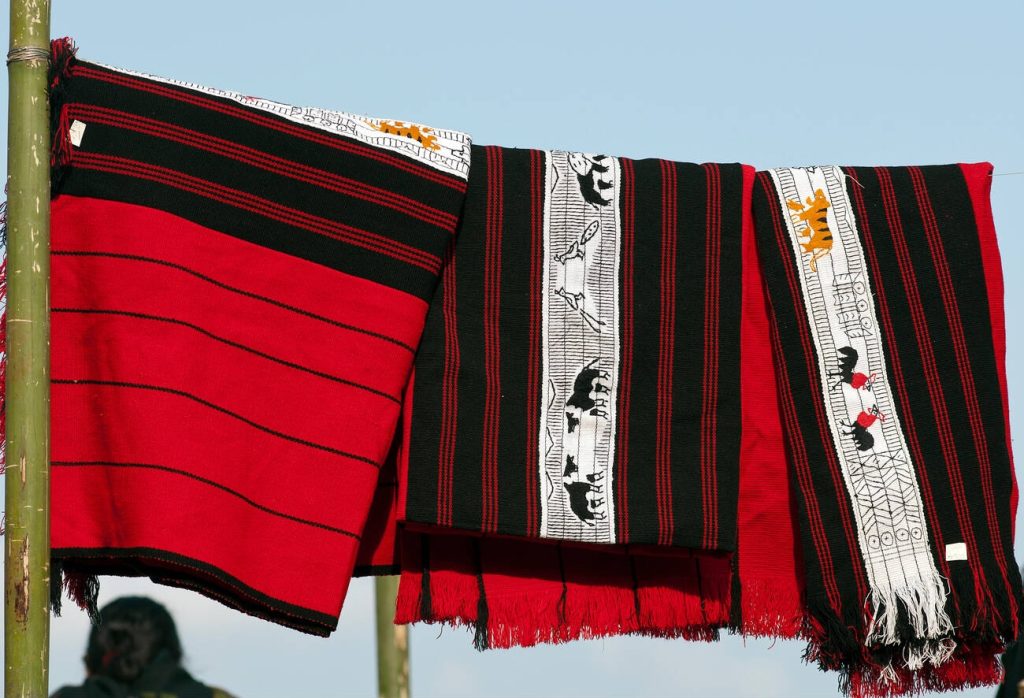
One of the most iconic and recognizable handicrafts of Nagaland is the Naga shawl. These shawls are not just articles of clothing but also represent the identity, status, and heritage of the wearer. Each Naga tribe has its distinctive shawl design, color patterns, and motifs. For example, the Angamis are known for their white shawls with black and red stripes, while the Lothas are famous for their colorful and intricate designs. Naga shawls are handwoven using traditional backstrap looms, and the process is often a communal effort involving women from the village.
2. Beadwork and Jewelry:
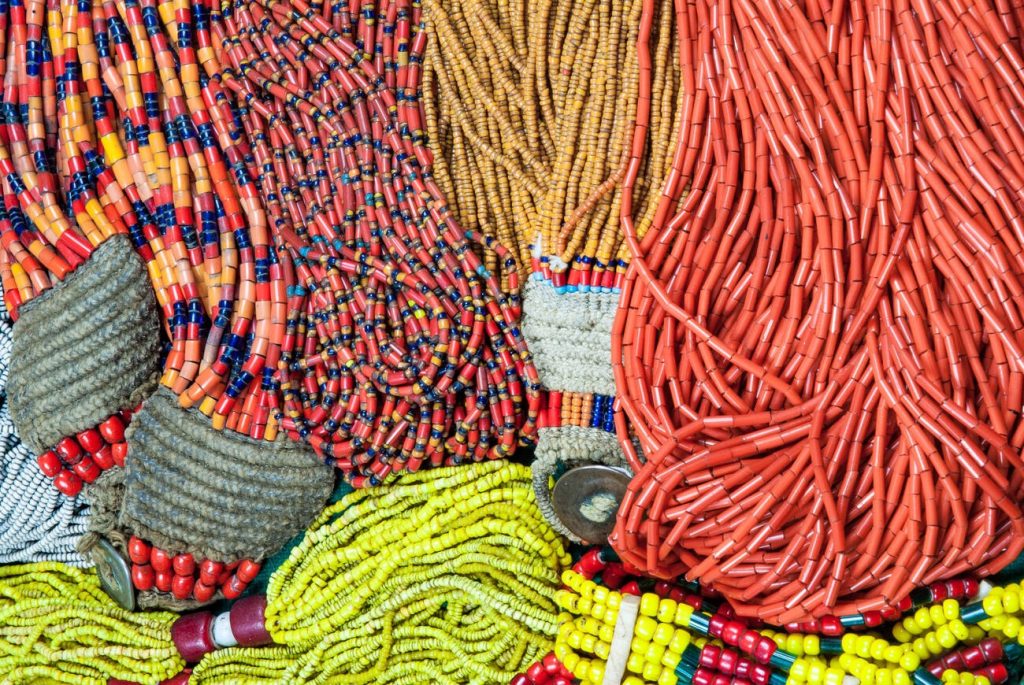
Naga beadwork and jewelry are renowned for their vibrant colors and intricate designs. These adornments hold cultural and social significance. Beads are meticulously handcrafted from materials like glass, seeds, shells, and animal bones. They are used to create necklaces, bracelets, and other ornaments. Beadwork often incorporates tribal symbols and motifs, making each piece unique to a particular Naga tribe. These jewelry pieces are not only decorative but also have cultural and ceremonial value.
3. Woodcarving:
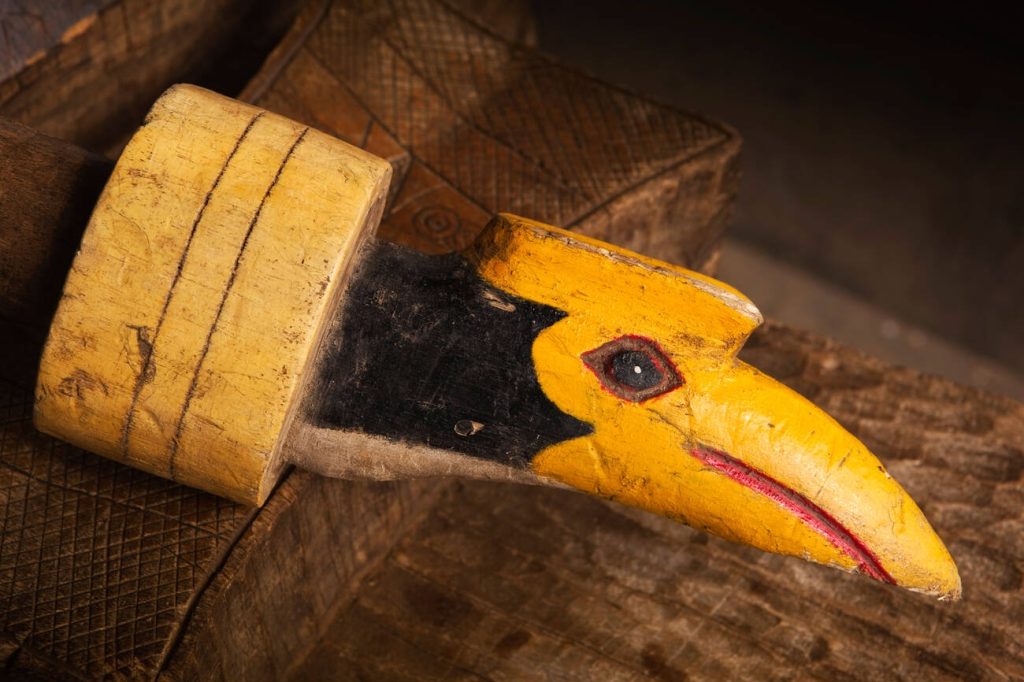
Naga woodcarving is another traditional art form that has thrived for centuries. Skilled craftsmen carve intricate designs on wooden objects, such as spears, shields, headhunting trophies, and household items. The motifs often depict animals, human figures, and abstract symbols that hold cultural and spiritual significance. These beautifully carved objects are not only utilitarian but also carry historical and artistic value.
4. Pottery:
Naga pottery is a traditional craft that reflects the utilitarian needs of the Naga people. Skilled potters create clay pots, bowls, and storage containers using hand-coiling techniques. These pottery items are often adorned with simple but elegant patterns. The pots are not only functional for cooking and storing food but also play a role in various cultural ceremonies and rituals.
5. Bamboo and Cane Craft:
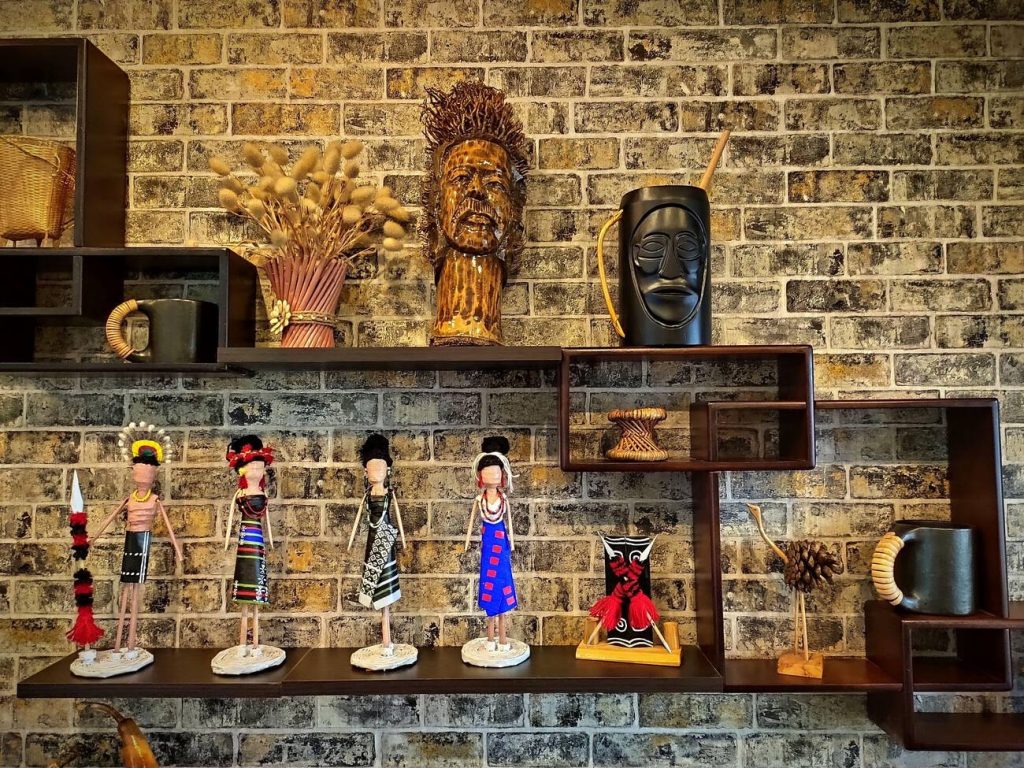
Bamboo and cane are abundant in Nagaland, and the Naga tribes have mastered the art of weaving and crafting using these materials. Bamboo baskets, mats, furniture, and musical instruments are some of the products created through these crafts. The durability and flexibility of bamboo and cane make them ideal for crafting items that are both functional and aesthetically pleasing.
6. Painting and Textiles:
Naga tribes also excel in painting and textile arts. Wall paintings, depicting scenes from tribal life and folklore, can be found in many Naga villages. Additionally, some Naga tribes engage in textile weaving, creating intricate patterns on fabrics that are used for clothing and home decor.
These traditional arts and handicrafts of Nagaland not only serve as sources of income for the local communities but also preserve the cultural identity and heritage of the Naga tribes and enhance the culture of Nagaland. They are essential components of Naga life and culture, and efforts are being made to promote and preserve these traditional crafts in the face of modernization. Visitors to Nagaland have the opportunity to appreciate and purchase these beautiful and meaningful handicrafts, connecting with the rich cultural tapestry of this unique region.
Food items in Nagaland-
Nagaland’s cuisine is as diverse and vibrant as its culture, with each Naga tribe offering a unique culinary experience. Here are descriptions of seven traditional dishes from Nagaland:
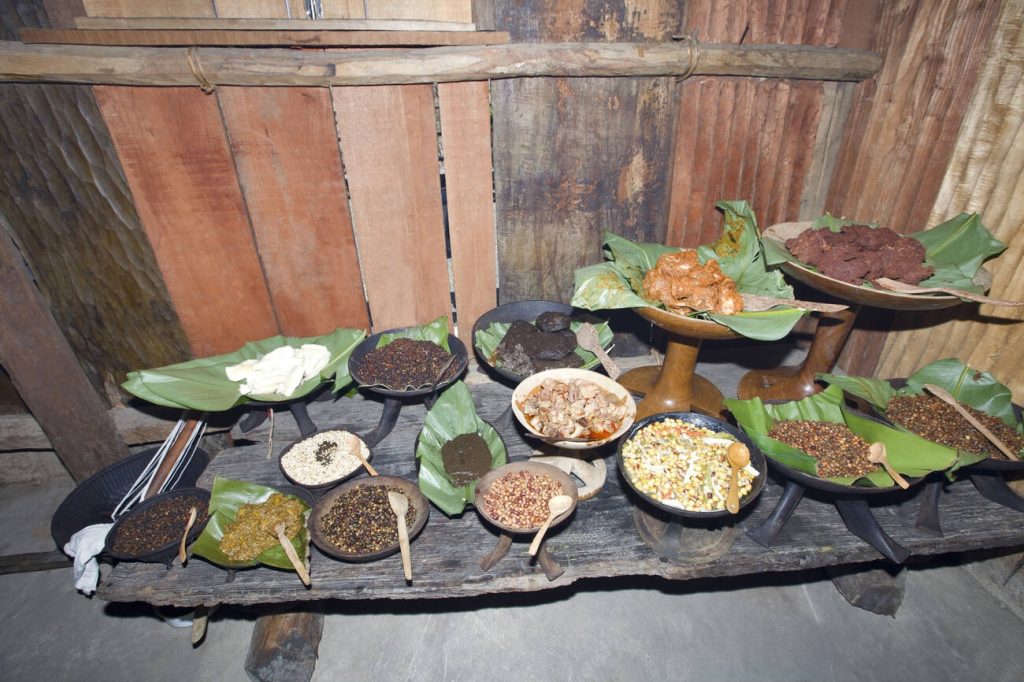
1. Smoked Pork with Bamboo Shoot (Sekrenyi Smoked Pork):
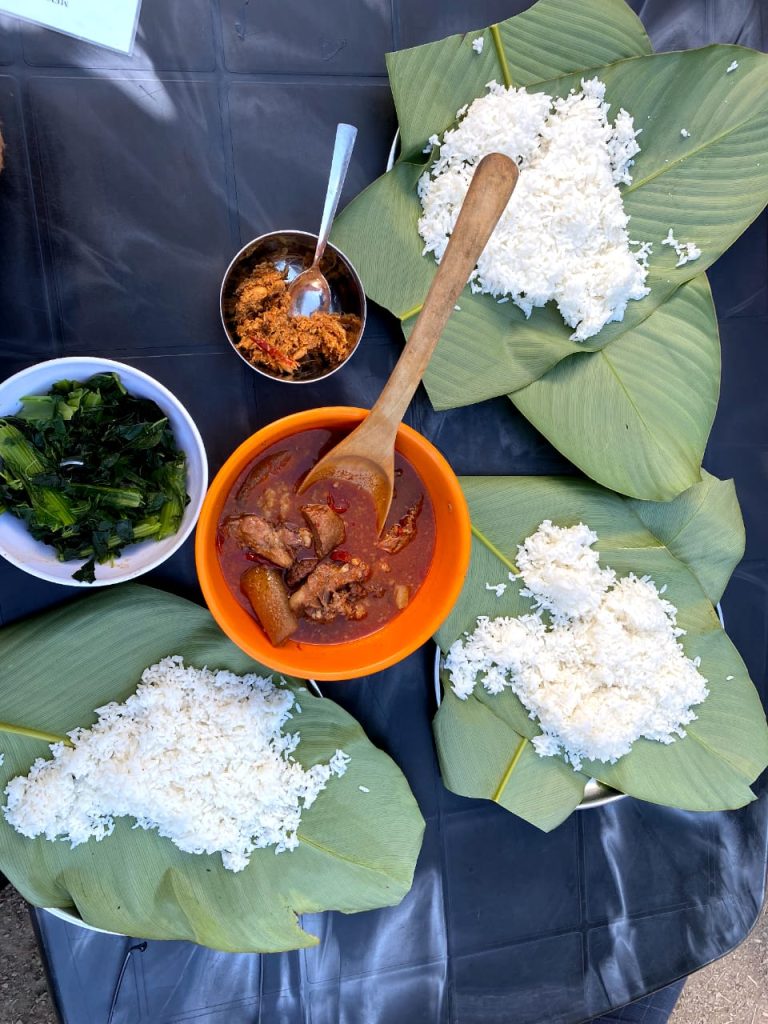
This iconic Naga dish combines tender smoked pork with fermented bamboo shoot. The pork is traditionally smoked over an open fire, imparting a delightful smoky flavor. The addition of bamboo shoot adds a tangy and earthy note, creating a mouthwatering fusion of flavors. It’s often enjoyed during festivals like Sekrenyi.
2. Naga Curry (Nakupi Alu):
Naga curry is a staple in Naga households. It typically features pork, chicken, or beef simmered in a spicy and aromatic chili-based curry. The use of the fiery Naga chili peppers gives the dish its signature heat. It’s often served with rice or traditional Naga bread called “Kosu.”
3. Bamboo Steamed Fish (Bamboo Fish Curry):
Fresh fish is marinated with herbs and spices, then placed in bamboo tubes and steamed to perfection. This method imparts a unique smoky flavor and keeps the fish incredibly tender. Various herbs and spices are used to create a fragrant and flavorful curry, making it a favorite among the locals.
4. Fermented Soybean (Akhuni):
Akhuni is a popular Naga condiment made from fermented soybeans. It has a pungent aroma and a complex umami taste. Akhuni is used to enhance the flavor of various dishes, such as stews, chutneys, and even traditional Naga rice cakes known as “Khao Suey.”
5. Sticky Rice (Zutho and Bamboo Steamed Rice):
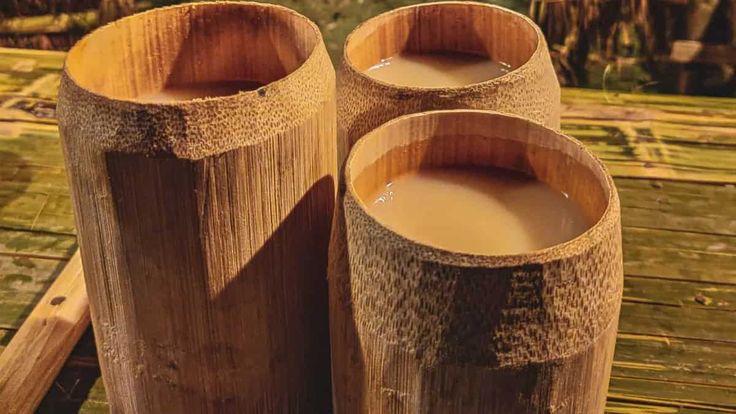
Sticky rice is a staple in Naga cuisine, often served with different accompaniments. Zutho is a traditional rice beer made from fermented sticky rice, and it’s commonly consumed during festivals and celebrations. Bamboo steamed rice is another variation, where rice is cooked inside bamboo tubes for a unique flavor.
6. Fermented Bamboo Shoot Salad (Kekhie/Khorisa):
This traditional Naga salad features fermented bamboo shoots mixed with herbs, green chilies, and sometimes dried fish. The pungent and sour taste of the bamboo shoot is balanced by the heat from the chilies, resulting in a flavorful and spicy salad.
7. Beef with Bamboo Shoot and Potatoes (Bamboo Beef Curry):
This hearty dish combines tender chunks of beef with bamboo shoots and potatoes in a spicy curry. The bamboo shoots add a delightful crunch and a unique taste to the dish, while the spices infuse it with a rich flavor.
These are just a few examples of the diverse and flavorful cuisine that Nagaland has to offer. Naga cuisine is known for its use of locally sourced ingredients, bold flavours, and a balance of spice and aroma that makes it a culinary adventure for those willing to explore it.
Normal lifestyle in Nagaland-
The normal lifestyle in Nagaland is deeply intertwined with the state’s unique culture, topography, and traditions. Here, I’ll provide a glimpse into the daily life of the Naga people, touching upon aspects such as climate, occupation, dressing, food, and more.
Climate:
Nagaland experiences a diverse range of climates due to its varying altitudes and topography. The state generally has a temperate climate, with four distinct seasons. Summers are mild, with temperatures ranging from 16°C to 31°C (61°F to 88°F). Monsoons bring heavy rainfall from June to September, vital for agriculture. Winters are cool and dry, with temperatures ranging from 4°C to 24°C (39°F to 75°F). The climate significantly influences daily activities, clothing choices, and agricultural practices.
Occupation:
Agriculture is the primary occupation in Nagaland, engaging a significant portion of the population. The state’s hilly terrain is well-suited for terrace farming, where crops like rice, millets, and vegetables are cultivated. Horticulture also thrives, with oranges, pineapples, and other fruits grown in abundance. Apart from farming, animal husbandry and handicrafts play essential roles in the state’s economy. Handicrafts such as weaving, woodcarving, and basket making provide additional sources of income for many families.
General Dressing:
Traditional attire remains an integral part of daily life in Nagaland. The Naga people take pride in their colorful and distinctive clothing. Men often wear shawls, loincloths, and accessories made from beads and shells. Women’s attire includes finely woven shawls and skirts adorned with intricate patterns and motifs. The choice of attire may also vary based on tribal affiliation, with each tribe having its unique style and designs.
Food:
Naga cuisine is an essential part of daily life, with meals typically comprising locally sourced ingredients. Rice is a staple, accompanied by a variety of side dishes. The cuisine is known for its spicy flavors, often attributed to the use of the famous Naga chili peppers. Common ingredients include bamboo shoots, fermented soybeans (akhuni), and dried fish. Meat, including pork, chicken, and occasionally beef, plays a prominent role in Naga meals. Local herbs and greens are used for flavoring, creating a distinctive and aromatic cuisine.
Housing:
Traditional Naga houses are typically made of wood and bamboo, reflecting the region’s abundant natural resources. These houses are often raised on stilts to protect against floods and pests. Roofs are thatched with leaves or bamboo, providing natural insulation against the elements. Modernization has led to some houses being constructed with concrete and corrugated iron roofs in urban areas, but traditional architecture is still prevalent in rural villages.
Community Life:
Community bonds are strong in Nagaland, and many social activities revolve around the village or tribal community. Festivals are a central part of community life, bringing people together to celebrate and uphold cultural traditions. Villages often have their councils and heads responsible for maintaining order and resolving disputes.
Language and Music:
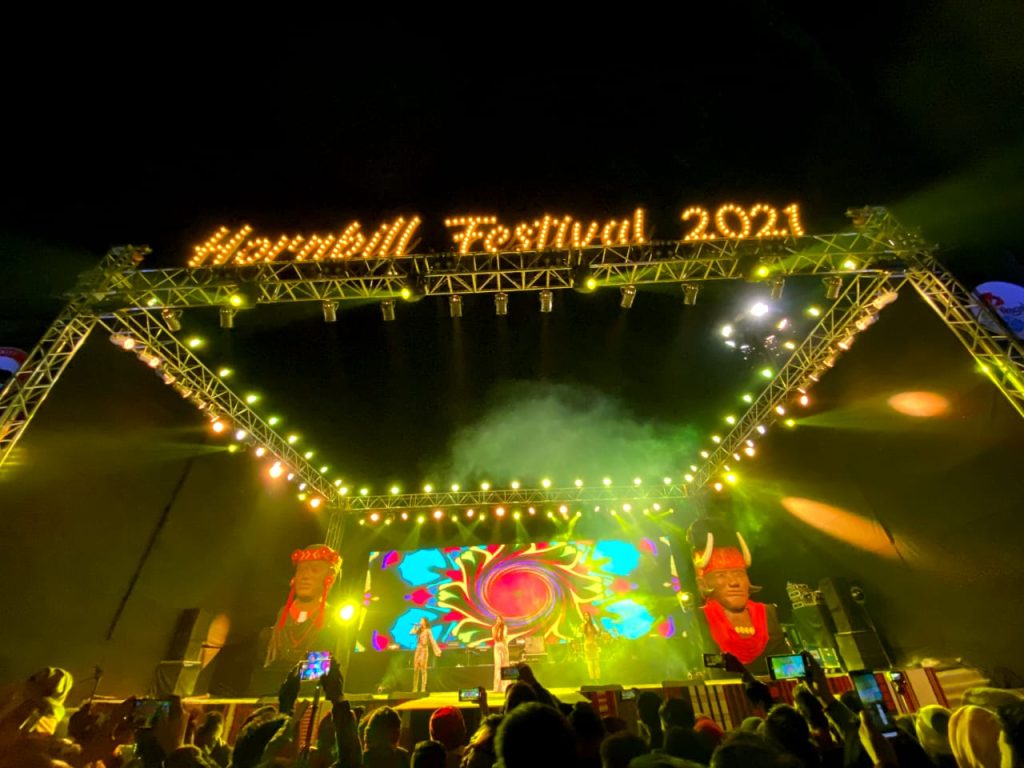
Nagaland is linguistically diverse, with each tribe having its distinct language and dialect. English is widely spoken and serves as the medium of education. Music and dance are integral to Naga culture, with each tribe having its unique traditional songs and dances that are performed during festivals and celebrations. The Naga people are known for their love of music, and traditional instruments like drums, gongs, and bamboo flutes are commonly used.
In conclusion, the normal lifestyle in Nagaland is deeply rooted in tradition, community, and a close connection to the land. The state’s diverse climate, rich agriculture, colorful attire, and flavorful cuisine all contribute to a unique way of life that continues to be cherished and celebrated by its people.
FAQ
-
How many cultures are there in Nagaland?
Nagaland has an ancient history of tribes whose count sums to be as much as 66 including the sub-tribes. Out of these, 16 are considered as major tribes. With a difference in language, all tribes have a similar leafy dress code, eating habits and traditional laws.
-
What Nagaland is famous for?
It is also popularly known as the ‘land of festivals and every tribal festival is celebrated with pomp and gaiety, adorned with rich and colorful traditional attires. The most vibrant being the ‘Hornbill Festival’ where the songs of the ancient Nagas echo and its music reverberates in the true spirit of the tribal men.
-
What is Naga culture known for?
Nagaland is known for its delicious tribal cuisines, local drinks, beautiful handicrafts and festivals, which include the famous Hornbill Festival. Studded with picturesque natural beauty, the state of Nagaland celebrates its tribal history, culture and festivals.



